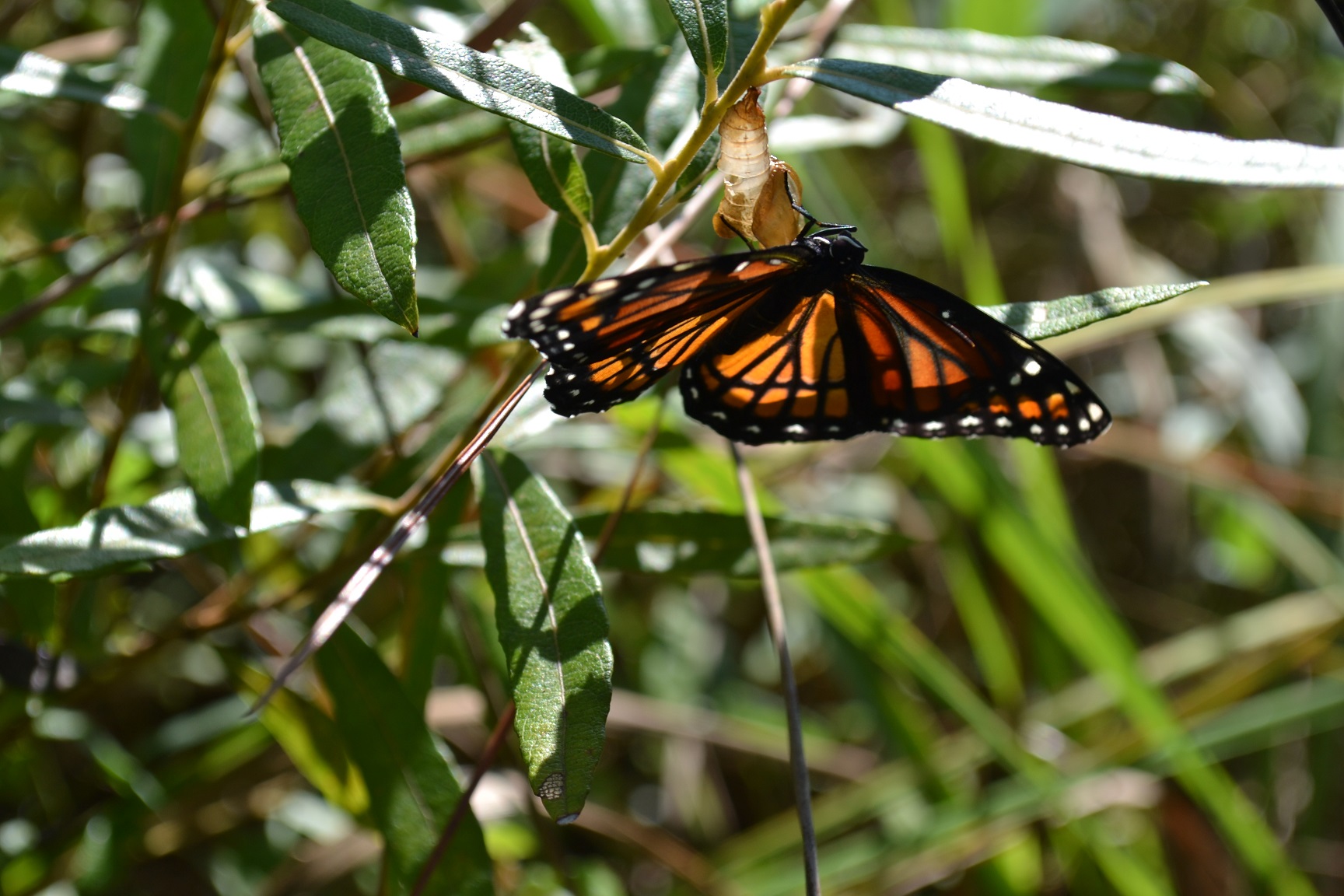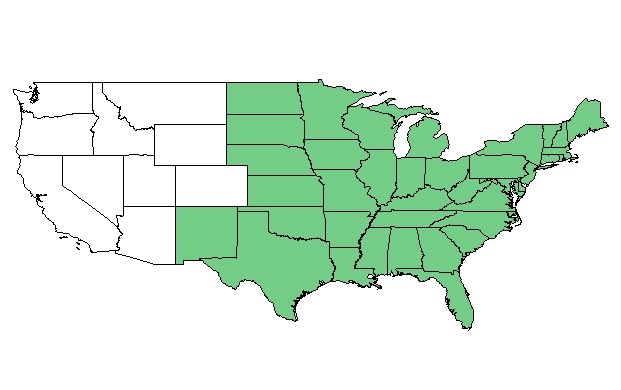Difference between revisions of "Salix humilis"
(→Ecology) |
|||
| Line 30: | Line 30: | ||
==Distribution== | ==Distribution== | ||
==Ecology== | ==Ecology== | ||
| − | + | ===Habitat=== <!--Natural communities, human disturbed habitats, topography, hydrology, soils, light, fire regime requirements for removal of competition, etc.--> | |
| + | |||
| + | ''S. humilis'' has been found in pine flatwoods, pond shorelines, and areas with loamy sand.<ref name="FSU"/> It is also found in disturbed areas including burned pine woods, under utility lines, and along hiking trails.<ref name="FSU"> Florida State University Herbarium Database. URL: http://herbarium.bio.fsu.edu. Last accessed: June 2021. Collectors: Loran C. Anderson, R. F. Doren, Robert K. Godfrey, R. Komarek, R. Kral, and William Platt. States and counties: Alabama: Talladega. Florida: Leon and Taylor. Georgia: Grady and Thomas.</ref> Associated species: ''Pinus palutris'', and ''P. elliottii, Cyrilla parviflora''.<ref name="FSU"/> | ||
| + | |||
<!--===Phenology===--> <!--Timing off flowering, fruiting, seed dispersal, and environmental triggers. Cite PanFlora website if appropriate: http://www.gilnelson.com/PanFlora/ --> | <!--===Phenology===--> <!--Timing off flowering, fruiting, seed dispersal, and environmental triggers. Cite PanFlora website if appropriate: http://www.gilnelson.com/PanFlora/ --> | ||
<!--===Seed dispersal===--> | <!--===Seed dispersal===--> | ||
Revision as of 17:12, 9 June 2021
Common names: Prairie willow, Dwarf willow, Upland willow
| Salix humilis | |
|---|---|

| |
| Salix humilis with Viceroy butterfly just enclosed from chrysalis. Wade Tract, GA. Photo by Kevin Robertson | |
| Scientific classification | |
| Kingdom: | Plantae |
| Division: | Magnoliophyta - Flowering plants |
| Class: | Magnoliopsida - Dicotyledons |
| Order: | Salicales |
| Family: | Salicaceae |
| Genus: | Salix |
| Species: | S. humilis |
| Binomial name | |
| Salix humilis Marshall | |

| |
| Natural range of Salix humilis from the Ladybird Johnson Wildflower Database. | |
Contents
Taxonomic notes
Synonyms: none Varieties: Salix humilis var. humilis; S. humilis var. hyporhysa Fernald
Description
"Catkins firms, not pendulous. Staminate flower with 2-8 stamens subtended by 1 or 2 glands. Leaves usually more than 3X as long as wide; buds with 1 scale. Capsule basically ovoid."[1]
"Shrub; branchlets usually cinereous. Leaves glabrous above, glaucous and usually pubescent beneath, coarsely reticulate, oblanceolate, obovate, or elliptic, 1.5-11.5 cm long, 0.6-3 cm wide, acute or obtuse, entire or undulate-crenulate, revolute, base cuneate petioles usually pubescent, 1-9 mm long. Stamens 2, filaments glabrous. Fruiting catkins 1.5-3 cm long, 15-18 mm broad, subsessile; capsules grayish, pubescent, 7-9 mm long, pedicels 1-2 mm long."[1]
Distribution
Ecology
Habitat
S. humilis has been found in pine flatwoods, pond shorelines, and areas with loamy sand.[2] It is also found in disturbed areas including burned pine woods, under utility lines, and along hiking trails.[2] Associated species: Pinus palutris, and P. elliottii, Cyrilla parviflora.[2]
Conservation, cultivation, and restoration
Cultural use
Photo Gallery
References and notes
- ↑ 1.0 1.1 Radford, Albert E., Harry E. Ahles, and C. Ritchie Bell. Manual of the Vascular Flora of the Carolinas. 1964, 1968. The University of North Carolina Press. 358. Print.
- ↑ 2.0 2.1 2.2 Florida State University Herbarium Database. URL: http://herbarium.bio.fsu.edu. Last accessed: June 2021. Collectors: Loran C. Anderson, R. F. Doren, Robert K. Godfrey, R. Komarek, R. Kral, and William Platt. States and counties: Alabama: Talladega. Florida: Leon and Taylor. Georgia: Grady and Thomas.